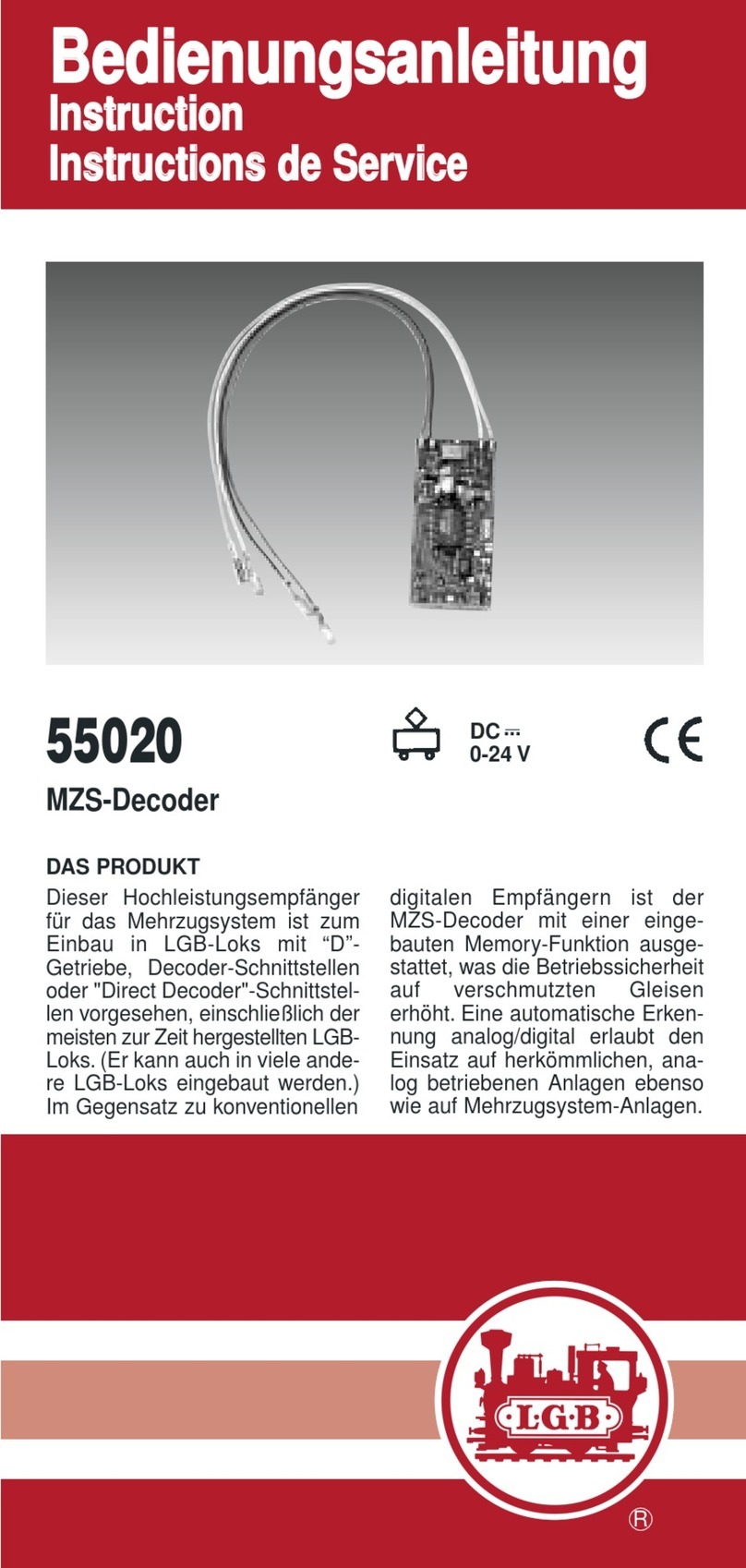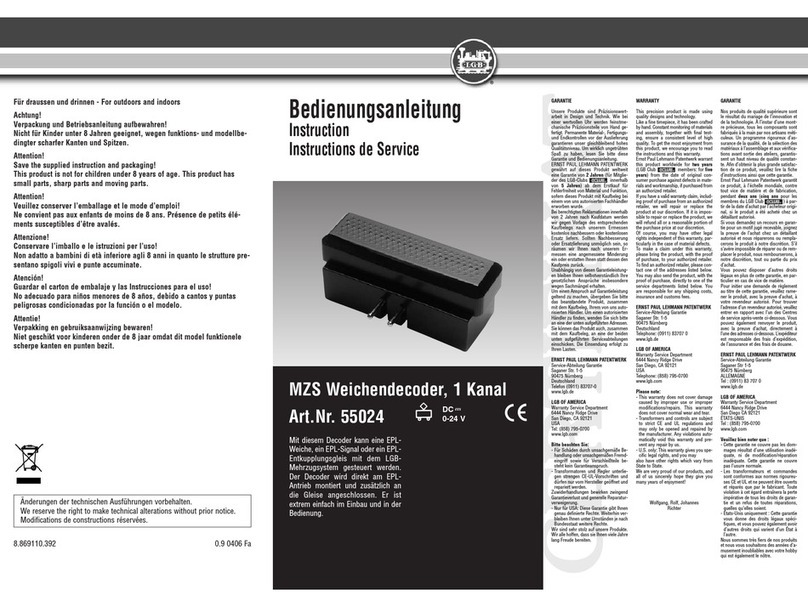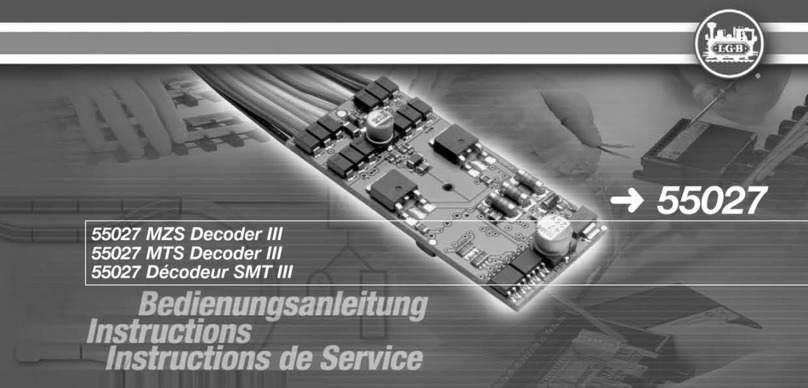
6
Technische Daten:
• Abmessungen: 55 x 25 mm
• Spannungsversorgung: 0-24 Volt DC oder DCC
• Motorausgang: max. 3 A
• Lichtausgänge: max. je 0,3 A
• Funktionsausgänge: max. je 0,8 A (max. 1,3 A in Summe
aller Licht- und Funktionsausgänge)
Einbau bei Loks mit LGB-DCC-Schnittstelle
• Lok öffnen, um an die Hauptplatine zu gelangen.
• DCC-Schnittstelle (Abb. 1) auf der Platine nden.
• Auf der Decoderschnittstelle bendet sich eine Brücke.
• Brücke abziehen und statt dessen das Kabel des Deco-
ders anschließen.
Hinweise:
• Der Stecker am Decoderkabel passt nur in einer Ausrich-
tung auf die Stifte der Platine.
• Falls der Decoder ausgebaut wird, muss die Brücke wie-
der auf die DCC-Schnittstelle aufgesteckt werden. Sonst
funktioniert die Lok nicht.
• Wenn ein Decoder in die Lok eingebaut ist, ist der Be-
triebsartenschalter funktionslos.
Einbau in andere Loks
Der Decoder kann auch zum Einbau in andere Lokomotiven
verwendet werden. Entfernen Sie den Stecker am Kabel
und schließen Sie den Decoder entsprechend Abb. 2 an. Für
erweiterte Einbauten müssen Kabel an die Lötstellen auf der
Decoderplatine angelötet werden. Dabei darf der Decoder
nicht zu stark erhitzt werden.
Hinweise:
• Wir empfehlen, den Decoder in der LGB-Service-Abtei-
lung ein bauen zu lassen. Weitere Informationen erhalten
Sie bei Ihrem LGB-Fachhändler oder direkt beim Märklin
Reparatur Service
• Achtung! Das Loch in der Mitte der Platine darf nicht zum
Befestigen einer Schraube verwendet werden.
Programmieren der Funktionswerte
Zahlreiche Funktionen des Decoder können individuell
programmiert werden. Dazu werden Funktionswerte in Regi-
stern (Conguration Variables - CVs) mit einem PC über das
MZS-PC-Decoderprogrammier-Modul 55045 programmiert.
Sie können die Funktionswerte auch mit dem Universal-
Handy 55015 programmieren.
Hinweise:
• Es ist nicht notwendig, die Funktionswerte zu ändern
(außer CV 1 Lokadresse), doch lässt sich über einige
Programmierungen das Fahrverhalten Ihrer Lokomotive
verbessern und genau Ihren Wünschen anpassen.
• Bei Fehlprogrammierungen kann über Register CV 7
der Auslieferungszustand der wichtigsten Register des
Decoders wieder hergestellt werden.








































